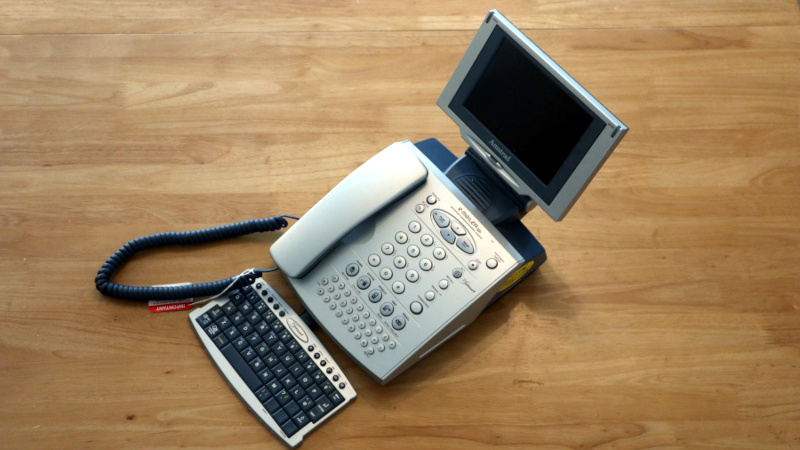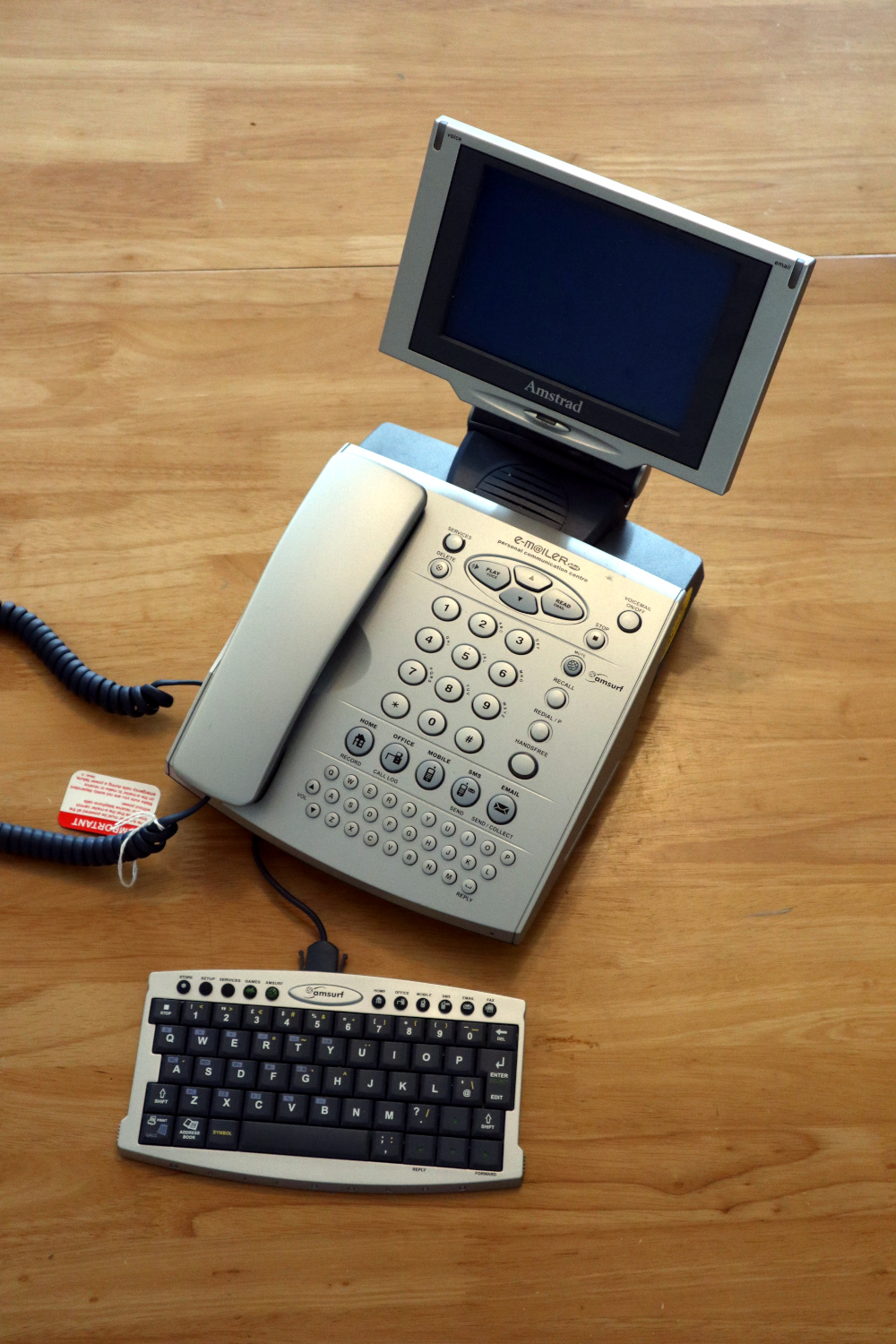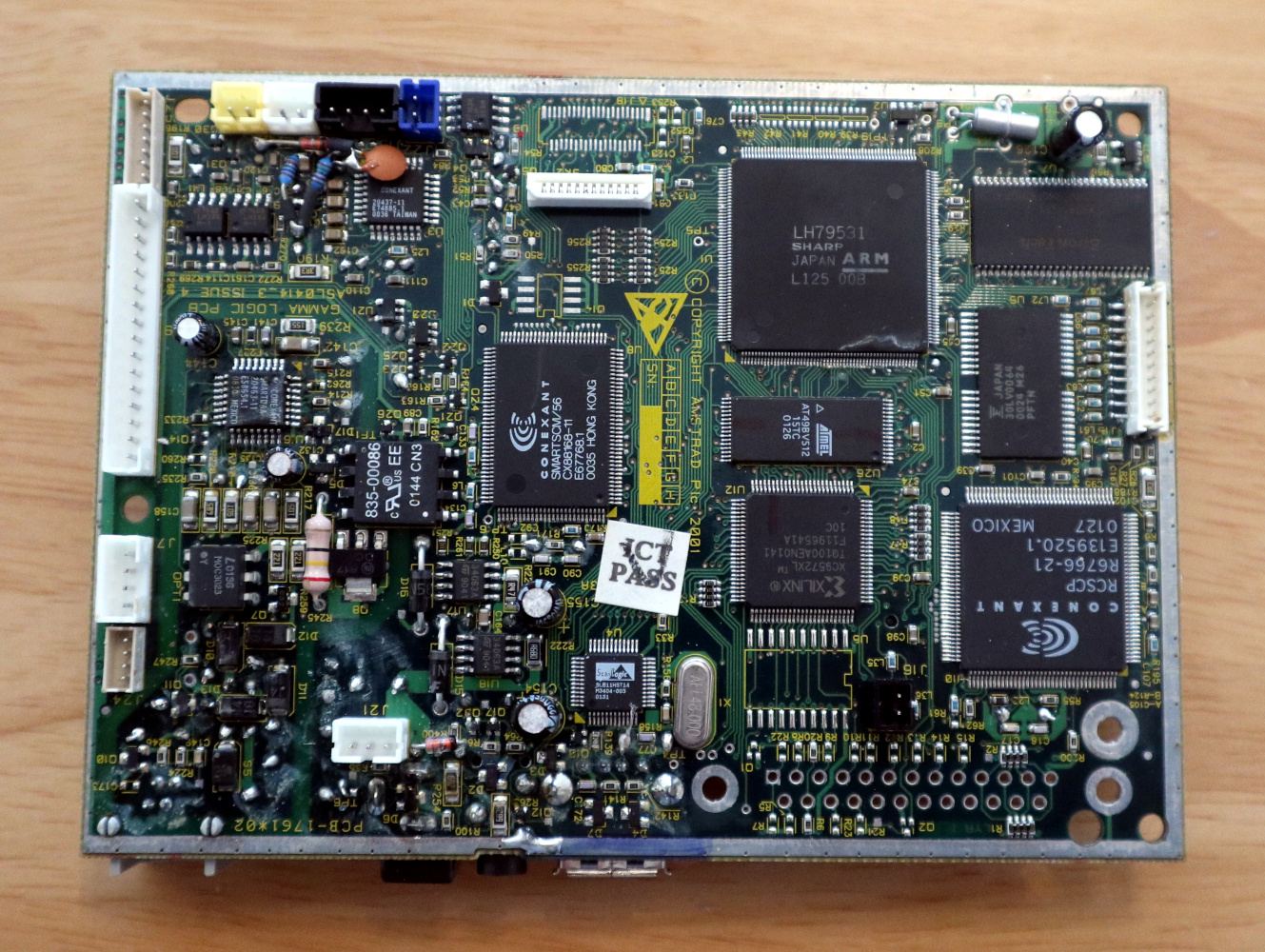The Amstrad E-m@iler, The Right Product With The Wrong Business Model [Hackaday]

One of the joys of the UK’s Electromagnetic Field hacker camp lies in the junk table, where trash turns to treasure in the blink of an eye. This year I returned relatively unscathed from my few days rifling through the tables,but I did snag a few pieces. One of them is a wired telephone, which would be a fairly unremarkable find were it not for its flip-up LCD screen and QWERTY keyboard.
My prize is a 2002 Amstrad E-m@iler Plus, one of a series of internet-equipped telephones from the British budget electronics company. The device itself and the story behind it make for a fascinating tale of a dotcom-era Internet flop, and a piece of hardware that could almost tempt today’s hackers.
You’ve Heard Of The Dotcom Boom, But Have You Heard Of The Hardware?
In the late 1990s, everything was about the Internet, but seemingly few outside the kind of people who read Hackaday really understood what it was really about. I’ve written before on these page about how hype blinded the CD-ROM industry to the shortcomings of its technology, but while that had in reality only gripped the publishing business, the Internet hype which followed had everyone in its thrall. You’re probably familiar with the story of the dotcom boom and crash as startup companies raised millions on shaky foundations before folding when they couldn’t deliver, but in parallel with that there was also a parallel world for hardware. The future was going to be connected, but on what and whose hardware would that connection happen?

It was clear that bulky desktop PCs weren’t exactly convenient, and the mobile phone manufacturers wouldn’t figure out the potential of their nascent smartphones for another decade, so there was a brief period when a host of internet browsing appliances attempted to grab the market. These were usually either set-top boxes or all-in-one stripped-down PCs, and were often sold through consumer electronics outlets rather than computer stores. Among them were even a few unexpected outings for familiar operating systems, for example the BeOS-powered Sony eVilla with its portrait CRT, or the Bush set-top box which would become sought-after among Acorn Archimedes fans because it ran RiscOS.
Many large consumer electronics companies dipped their toe into this market, and in the UK it caught the attention of Sir Alan Sugar’s Amstrad. At the time they were a huge name in consumer electronics in these isles, having specialised in the flashy-but-budget end of the sector. Their existing computer business had equipped Brits with CP/M word processors and proprietary PC clones for years, and it’s fair to say that Sir Alan had a keen eye for what was likely to work with consumers. The E-m@iler was a standard wired phone with an internet appliance built-in, at first as the name suggests as an email terminal, and then with later models featuring a web browser, and later on a camera for video calling. It was for its time a very well-thought-out product that was perfect for older or less technically-inclined customers, and when it was launched in 2000 it caused quite a bit of excitement.
Such A Good Product, Shame About The Business Model
If the E-m@iler was a great piece of hardware for its time then, it had an Achilles’ heel in its business model. Sold at a loss, it relied on a subscription-based ISP with a premium-rate phone line and a per-email charge. It couldn’t be used with any ISP other than Amstrad’s Amserve, and thus although it won a small and loyal customer base, it hardly flew off the shelves. By the end they could be picked up in the UK supermarket Tesco for under £20, and despite those new models appearing, by 2010 they were gone. In a later interview Sir Alan revealed that the product did break even from the user base it had gathered, but was nowhere near a runaway success.
At the time I thought that the E-m@iler was a great idea well-executed far as the hardware went, even though its business model made no sense. A friend of mine’s elderly father had one, and it was easy for him to use it to keep in touch. Looking at mine in front of me today I still like it, but I want to know more. Time for a closer look.
Peering Inside, Is It Hackable?

My device appears to be unused as it still has protective plastic over its handset, but sadly try as I might I couldn’t get it to power up. Cracking it open I find its motherboard, centred around a Sharp ARM processor and a Connexant phone line and modem chipset. On the back there are serial and USB sockets as well as the modem, and though it’s not populated there’s also space for a parallel printer port. Meanwhile on the sides of the unit are a smart media card slot, a smartcard slot driven by a daughter board, and what looks like another serial connection for Amstrad’s pocket databank range.
Digging around online for pages from two decades ago I find that the later version with the video camera had a TI OMAP main processor and ran MontaVista Linux under the hood, but sadly there’s much less info to be found for my second-generation one. A TV advert on YouTube reveals it running Microsoft Mobile Internet Explorer so it’s either Windows CE or something proprietary underneath all the Amserve interface, thus perhaps it’s not as hackable as I’d hoped. Still, it’s not without interesting possibilities, as that slide-out keyboard has a PS/2 interface.
Here in 2024 the idea of accessing the Internet through a wired phone seems laughable. Indeed the wired phone itself has become an endangered breed in many places. But a device like the E-m@ailer made sense two decades ago, for which I will give Sir Alan his due: I believe he was right. It’s sad then that it completely missed its opportunity in a rare case of Amstrad getting it so wrong on the subscription model. Now it’s little more than a paperweight, but I can’t help looking at it with speculative eyes. Should I put it back on the swap table at the next event I go to, or should I bring it back to life with a decent screen and a Raspberry Pi?

![the-amstrad-e-m@iler,-the-right-product-with-the-wrong-business-model-[hackaday]](https://i0.wp.com/upmytech.com/wp-content/uploads/2024/06/191726-the-amstrad-e-miler-the-right-product-with-the-wrong-business-model-hackaday.jpg?resize=800%2C445&ssl=1)